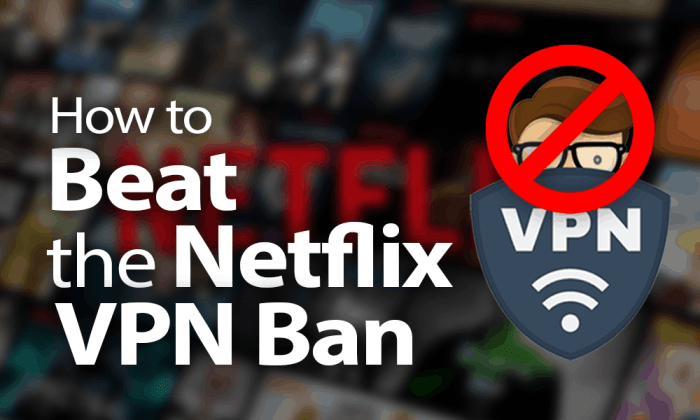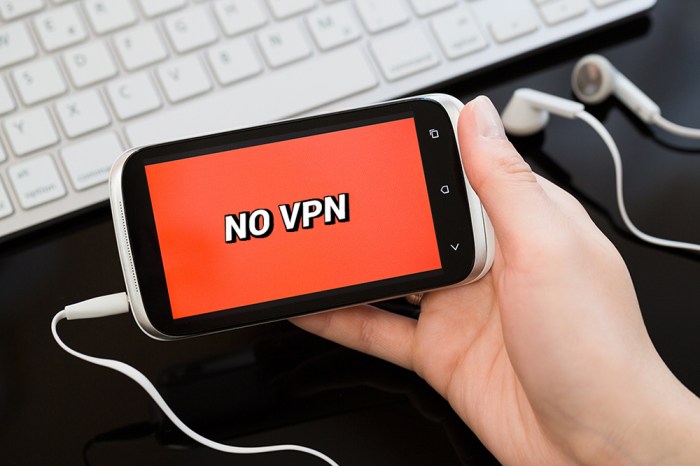Netflix wont be reversing its vpn ban – Netflix Won’t Reverse Its VPN Ban, a decision that has sparked debate and raised questions about the future of streaming. While the company aims to enforce licensing agreements and ensure content availability for specific regions, the ban has left many users frustrated and seeking alternative solutions. This move has sparked discussions about the evolving relationship between streaming services, VPN technology, and user access to content.
The rationale behind Netflix’s decision is rooted in licensing agreements. Content providers often restrict distribution rights to specific geographic regions, and Netflix must adhere to these terms. However, the ban has created a ripple effect, impacting users who rely on VPNs to access content unavailable in their location. This has led to frustration among users, particularly those who previously enjoyed a wider selection of shows and movies. The impact extends beyond individual viewers, raising concerns about the future of streaming and the potential for regional content restrictions to become more prevalent.
Netflix’s VPN Ban: A Global Perspective: Netflix Wont Be Reversing Its Vpn Ban

Netflix’s decision to ban VPNs and proxy services has sparked significant debate, raising questions about content access, user rights, and the future of streaming services. This ban aims to enforce licensing agreements and ensure content is only available in regions where it’s legally authorized. However, it has led to unintended consequences for users around the world, particularly those seeking access to content unavailable in their region.
Impact on Users in Different Regions
The impact of the VPN ban varies considerably depending on a user’s location and the content they seek. For instance, users in regions with limited content libraries, such as those in developing countries, may face significant limitations. The ban could restrict access to popular shows and movies that are available in other countries, leading to frustration and a sense of inequality. Conversely, users in regions with extensive content libraries may experience minimal impact.
Content Availability and Pricing
The ban has also raised concerns about content availability and pricing. In some cases, the ban may force users to pay higher prices for content that is available at a lower cost in other regions. This is particularly true for users who rely on VPNs to access cheaper content libraries in countries like India or Latin America. The ban could further exacerbate the existing gap in content availability and pricing between different regions.
Comparison with Other Streaming Services
Other streaming services have adopted different approaches regarding VPN usage. Some services, like Hulu and Amazon Prime Video, have explicitly stated their policies against VPN usage, while others, like Disney+, have remained relatively silent. The lack of a standardized approach across streaming services creates confusion for users and raises questions about the fairness and transparency of content access policies.
The Technicalities of VPN Detection and Circumvention

The cat-and-mouse game between Netflix and VPN providers is a constant battleground, with both sides employing sophisticated techniques to outmaneuver the other. This section delves into the technical aspects of how Netflix detects and blocks VPN connections and the countermeasures employed by VPN providers to circumvent these restrictions.
Netflix’s VPN Detection Methods, Netflix wont be reversing its vpn ban
Netflix uses various techniques to identify and block VPN connections, primarily focusing on identifying unusual IP address patterns and network characteristics.
- IP Address Geolocation: Netflix relies on IP address geolocation databases to determine the user’s physical location. If the IP address associated with a VPN server doesn’t match the user’s claimed location, Netflix flags it as suspicious.
- VPN Server Fingerprinting: Netflix maintains a database of known VPN server IP addresses. When a user connects through a VPN, Netflix can cross-reference the IP address with its database and block access if a match is found.
- Network Analysis: Netflix analyzes network traffic patterns and identifies characteristics typical of VPN connections, such as unusual routing paths or high latency.
- DNS Leak Detection: Netflix can detect if a user’s DNS requests leak their true location, revealing their use of a VPN.
VPN Circumvention Techniques
VPN providers employ various strategies to circumvent Netflix’s detection mechanisms:
- Dynamic IP Allocation: VPN providers use dynamic IP address allocation, regularly changing the IP addresses assigned to their servers, making it harder for Netflix to maintain a static database of VPN server IPs.
- Obfuscated Servers: Some VPN providers use obfuscated servers that mask VPN traffic, making it appear like regular internet traffic. These servers use techniques like encryption and port forwarding to disguise their true nature.
- Dedicated Streaming Servers: VPN providers dedicate specific servers for streaming services like Netflix, optimizing them for speed and bypassing detection mechanisms.
- Anti-VPN Detection Software: Some VPN providers offer anti-VPN detection software that helps users bypass Netflix’s detection techniques by modifying their network settings and traffic patterns.
Effectiveness and Risks
The effectiveness of VPN circumvention techniques varies depending on the provider and the specific methods employed. While some VPN providers are successful in bypassing Netflix’s restrictions, others are less effective.
- Effectiveness: The effectiveness of VPN circumvention techniques is influenced by factors such as the provider’s resources, technical expertise, and the sophistication of their methods.
- Risks: There are potential risks associated with using VPNs to access geo-restricted content, including security vulnerabilities, privacy concerns, and legal implications.
The Netflix VPN ban has brought the complex interplay between streaming services, VPN technology, and content licensing into the spotlight. While Netflix seeks to enforce licensing agreements and ensure fair access to content, the ban has ignited a debate about the future of streaming and the potential for regional content restrictions to become more commonplace. The evolving landscape of streaming and VPN technology suggests that this issue is likely to continue to evolve, prompting ongoing discussions about the balance between content access and licensing rights.
While Netflix is sticking to its decision to ban VPNs, the world of mapping is experiencing a shakeup. Here Maps, once part of Microsoft, has announced its independence and is promising exciting updates for Windows 10 maps. here maps exits microsoft promises exciting update for windows 10 maps This change might mean a new era for mapping, while Netflix’s VPN ban continues to generate discussion about streaming accessibility.